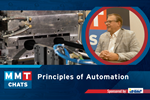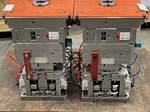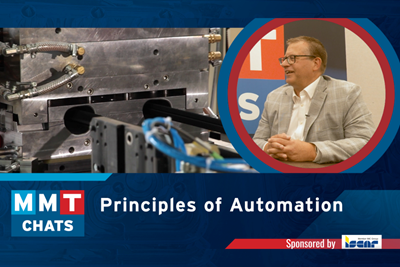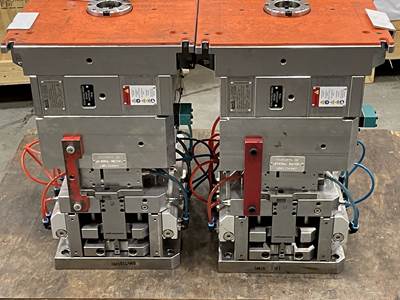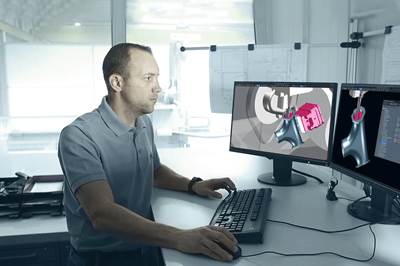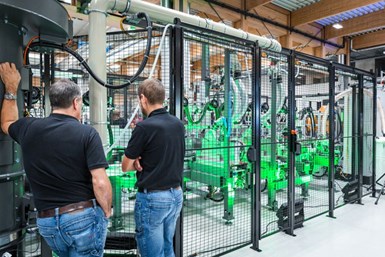
PFAFF Molds focuses on a customer’s pain points to develop an automation system solution to best fit their needs. Here, PFAFF customers review an automated cutting and splicing machine. Photo Credit, all images: Pfaff Tech Days in October 2023, Roethenbach, Germany and Dornbirn, Austria.
When developing an automation system for your customers, focus on identifying and addressing the key components that will add significant value. Start by understanding the main challenges your customers face. These challenges often revolve around high worker turnover, rising costs, varying production volumes and sustainability.
Here are seven steps to take when developing an automation solution for your customers:
1. Collaborate to Define the Problem: Work closely with your customers to collaboratively define challenges and requirements. This involves transparent discussions about costs, expenditure and key areas of concern. Leverage the collective knowledge of your team and your customer’s insights.
2. Identify Key Components: For example, reducing worker turnover, addressing rising costs, managing varying production volumes and enhancing sustainability.
3. Build a Synergized Solution: Synergize information from various sources, including engineers, design teams, project managers and production floor staff. This collaborative approach ensures a comprehensive understanding of the challenges and aids in crafting a solution that aligns with the customer’s needs.
4. Prepare for Innovation: Be prepared for innovation and understand that initial proposals may face rejection. Embrace the iterative process of refining ideas based on customer feedback. The relentless pursuit of innovation involves going back to the drawing board multiple times.
5. Conduct an ROI Analysis: Conduct a thorough return on investment (ROI) analysis, considering factors like reduced labor costs, minimized scrap rates and increased efficiency. Clearly present the potential benefits to the customer, both in terms of cost savings and improved operational outcomes.
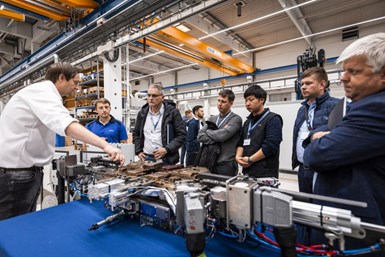
A problem for a customer is an opportunity for a mold builder. Here, a PFAFF project manager (on the left) explains the benefits of an automated molding process to his customers.
6. Be Open to Failure: Acknowledge that when venturing into new territory, failure may be part of the process. Learn from rejected ideas and be willing to adapt your approach to find the right solution.
7. Execute with Flexibility: Once the solution is defined and approved, proceed with the execution phase. Be flexible in your approach and open to adjustments as the project progresses.
By focusing on these key steps and components, you can build an automation system that not only meets but exceeds your customer’s expectations.
Related Content
6 Ways to Optimize High-Feed Milling
High-feed milling can significantly outweigh potential reliability challenges. Consider these six strategies in order to make high-feed milling successful for your business.
Read MoreTreatment and Disposal of Used Metalworking Fluids
With greater emphasis on fluid longevity and fluid recycling, it is important to remember that water-based metalworking fluids are “consumable” and have a finite life.
Read MoreMaintaining a Wire EDM Machine
To achieve the ultimate capability and level of productivity from your wire EDM on a consistent, repeatable and reliable basis, regular maintenance is a required task.
Read MoreThe Benefits of Hand Scraping
Accuracy and flatness are two benefits of hand scraping that help improve machine loop stiffness, workpiece surface finish and component geometry.
Read MoreRead Next
MMT Chat: Key Principles of an Automated System
PFAFF Molds develops its automated systems to address key customer pain points – such as high worker turnover, rising costs, volume fluctuation and sustainability.
Read MoreSpecialist Automotive Mold Builder Mentors in Work and Life Skills
Southeastern mold builder PFAFF Molds sets the standard in toolmaking for automotive window and vehicle body sealing systems through knowledge-sharing and automation.
Read MoreHow to Automate Process and Design
Moldmakers can improve their operations and stop wasting time by taking these six steps for process and design automation.
Read More

